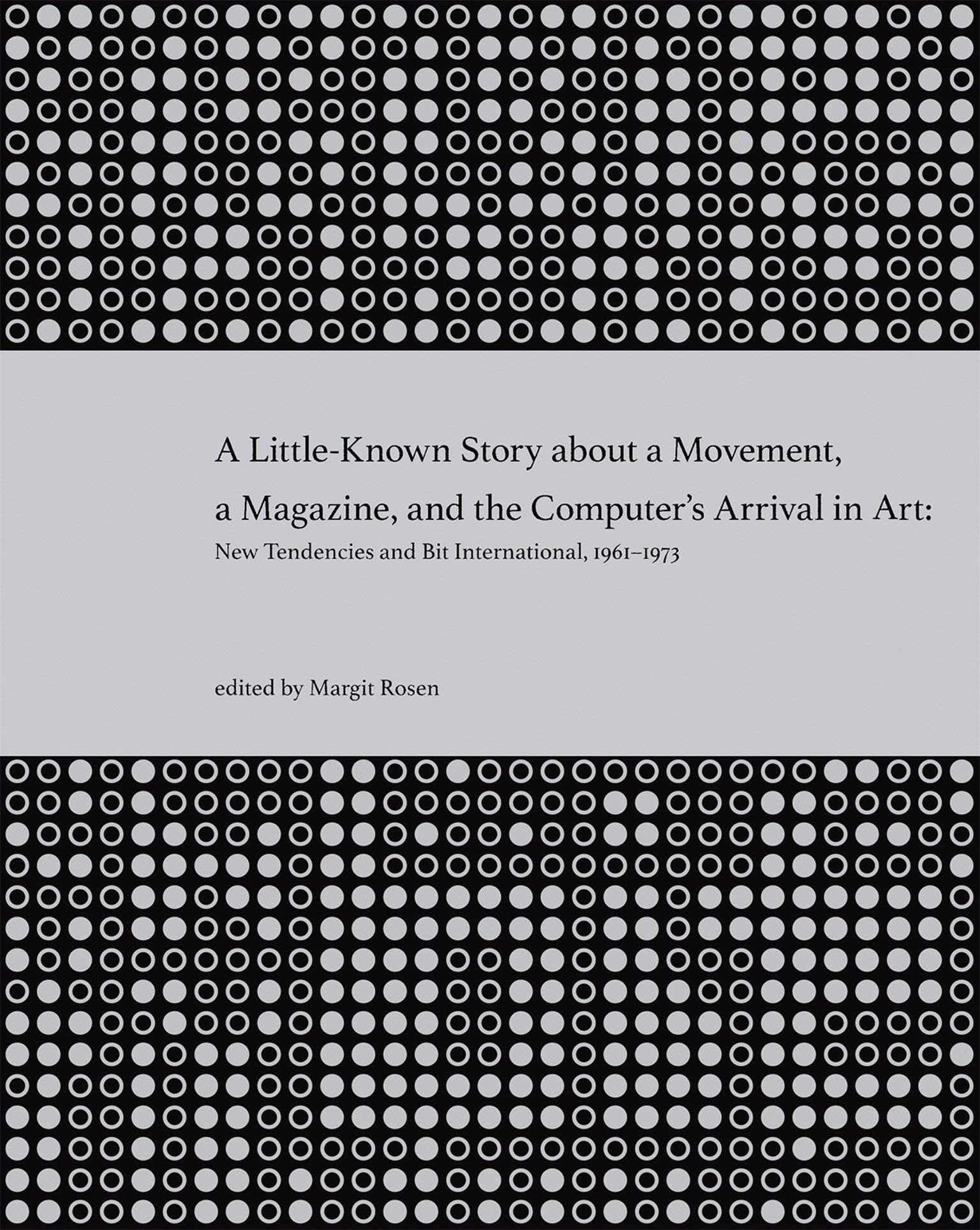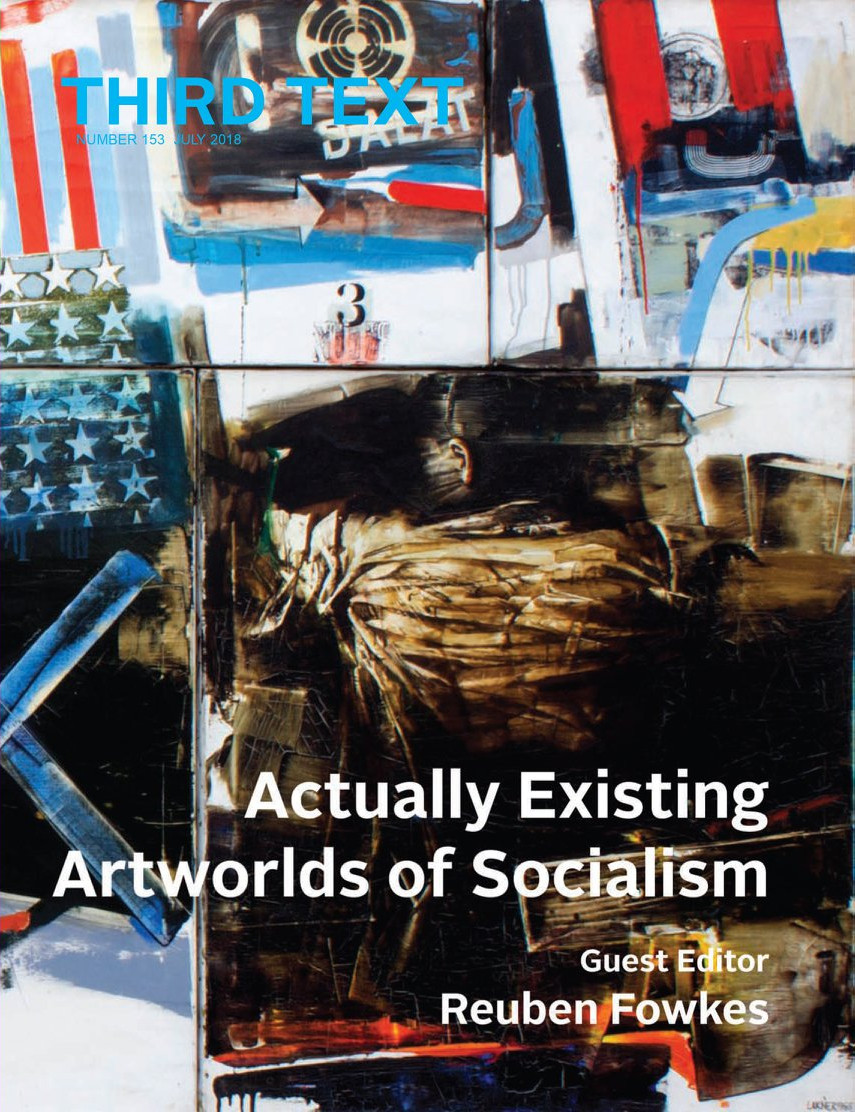Margit Rosen, et al. (eds.): A Little-Known Story About a Movement, a Magazine, and The Computer’s Arrival in Art: New Tendencies and Bit International, 1961-1973 (2011)
Filed under book, catalogue | Tags: · 1960s, 1970s, art and science, art history, artistic research, computer art, computing, conceptual art, concrete art, constructivism, cybernetics, design, kinetic art, media art, new tendencies, op art, yugoslavia

“When Zagreb was the epicenter of explorations into the aesthetic potential of the new “thinking machines.”
This book documents a short but intense artistic experiment that took place in Yugoslavia in the 1960s and 1970s but has been influential far beyond that time and place: the “little-known story” of the advent of computers in art. It was through the activities of the New Tendencies movement, begun in Zagreb in 1961, and its supporting institution the Galerija suvremene umjetnosti that the “thinking machine” was adopted as an artistic tool and medium. Pursuing the idea of “art as visual research,” the New Tendencies movement proceeded along a path that led from Concrete and Constructivist art, Op art, and Kinetic art to computer-generated graphics, film, and sculpture.
With their exhibitions and conferences and the 1968 launch of the multilingual, groundbreaking magazine Bit International, the New Tendencies transformed Zagreb—already one of the most vibrant artistic centers in Yugoslavia—into an international meeting place where artists, engineers, and scientists from both sides of the Iron Curtain gathered around the then-new technology. For a brief moment in time, Zagreb was the epicenter of explorations of the aesthetic, scientific, and political potential of the computer.
This volume documents that exhilarating period. It includes new essays by Jerko Denegri, Darko Fritz, Margit Rosen, and Peter Weibel; many texts that were first published in New Tendencies exhibition catalogs and Bit International magazine; and historic documents. More than 650 black-and-white and color illustrations testify to the astonishing diversity of the exhibited artworks and introduce the movement’s protagonists. Many of the historic photographs, translations, and documents are published here for the first time. Taken together, the images and texts offer the long overdue history of the New Tendencies experiment and its impact on the art of the twentieth century.”
Edited by Margit Rosen in collaboration with Peter Weibel, Darko Fritz, and Marija Gattin
Publisher ZKM Center for Art and Media, Karlsruhe, and MIT Press, Cambridge, MA, 2011
ISBN 9780262515818, 0262515814
576 pages
Reviews: Brian Reffin Smith (Leonardo, 2012), Joanna Inglot (Slavic Review, 2012), Greg Borman (ARLIS/NA, 2011).
Book website
Exhibition (ZKM, 2008)
Publisher
Publisher
WorldCat
PDF (102 MB)
See also New Tendencies and Bit International on Monoskop wiki.
Comment (1)Third Text, 153: Actually Existing Artworlds of Socialism (2018)
Filed under journal | Tags: · art history, central europe, communism, east-central europe, eastern europe, new tendencies, photography, politics, socialism, southeastern europe

“The tensions between actual and ideal versions of socialism elucidated by East German theorist Rudolf Bahro in 1977 are taken as a starting point for reconsidering East European art from the radical effervescence of the 1960s to the post-utopian twilight of the late 1970s. The special issue is premised on the concept that artistic life in Eastern Europe was profoundly shaped by the structures, conventions and workings of the overarching system, with artists and critics compelled to negotiate its productive contradictions. It examines the quotidian functioning of art scenes across the region that entailed the drawing up of tacit compromises and maintenance of calculated ambiguities in relations between party authorities and artists. Ultimately it was the latent and unrealised promise of actually existing socialism as much as its demonstrative failings that marked a crucial difference in the attitude of East European artists to the utopian reverberations of the era.”
With texts by Maja Fowkes & Reuben Fowkes, Tomáš Pospiszyl, Tomasz Załuski, Zsuzsa László, Daniel Grúň, Candice M Hamelin, Hana Buddeus, Alina Șerban, Raino Isto, Sonja Simonyi, Marko Ilić, and Armin Medosch.
Edited by Reuben Fowkes
Publisher Routledge, July 2018
ISSN 0952-8822
194 pages
PDF (40 MB)
Comment (0)Armin Medosch: New Tendencies: Art at the Threshold of the Information Revolution, 1961–1978 (2016)
Filed under book | Tags: · art history, computer art, conceptual art, cybernetics, neo-avant-garde, new art practice, new tendencies, non-aligned movement

“New Tendencies, a non-aligned modernist art movement, emerged in the early 1960s in the former Yugoslavia, a non-aligned country. It represented a new sensibility, rejecting both Abstract Expressionism and socialist realism in an attempt to formulate an art adequate to the age of advanced mass production. In this book, Armin Medosch examines the development of New Tendencies as a major international art movement in the context of social, political, and technological history. Doing so, he traces concurrent paradigm shifts: the change from Fordism (the political economy of mass production and consumption) to the information society, and the change from postwar modernism to dematerialized postmodern art practices.
Medosch explains that New Tendencies, rather than opposing the forces of technology as most artists and intellectuals of the time did, imagined the rapid advance of technology to be a springboard into a future beyond alienation and oppression. Works by New Tendencies cast the viewer as coproducer, abolishing the idea of artist as creative genius and replacing it with the notion of the visual researcher. In 1968 and 1969, the group actively turned to the computer as a medium of visual research, anticipating new media and digital art.
Medosch discusses modernization in then-Yugoslavia and other nations on the periphery; looks in detail at New Tendencies’ five major exhibitions in Zagreb (the capital of Croatia); and considers such topics as the group’s relation to science, the changing relationship of manual and intellectual labor, New Tendencies in the international art market, their engagement with computer art, and the group’s eventual eclipse by other “new art practices” including conceptualism, land art, and arte povera. Numerous illustrations document New Tendencies’ works and exhibitions.”
Based on 2012 dissertation from Goldsmiths, University of London.
Publisher MIT Press, 2016
Leonardo series
ISBN 9780262034166, 0262034166
x+395 pages
Reviews: Oliver Schürer (Versorgerin, 2016, DE), Paula Barreiro López (Critique d’art, 2016, FR), Kristian Lukić (Furtherfield, 2017), Tomáš Glanc (Tech & Culture, 2017), Adair Rounthwaite (Art Bulletin, 2018), Adair Rounthwaite (Art Bulletin, 2018), Ivana Bago (ARTMargins, 2019).
HTML
PDF (added on 2022-10-11)

